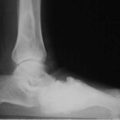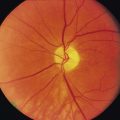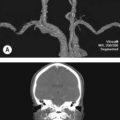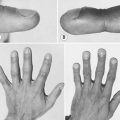160 Vitiligo
Salient features
Examination
• Hypopigmented patches (Fig. 160.1) that are distributed symmetrically; sometimes the border may be hyperpigmented. The distribution often includes wrists, axillae, perioral, periorbital and anogenital skin
• White hairs in the vitiliginous area
• Some spontaneous re-pigmentation in the sun exposed regions (in a third of cases).
Advanced-level questions
What are the types of vitiligo?
Non-segmental vitiligo. White patches that are often symmetric and that usually increase in size over time, corresponding to a substantial loss of functioning epidermal melanocytes and sometimes hair-follicle melanocytes. The key precipitating factors include immunologic factors, oxidative stress or a sympathetic neurogenic disturbance. Accounts for 85–90% all cases of vitiligo.
Segmental vitiligo. Unilateral distribution that may completely or partially match a dermatome. In most patients there is one unique segment of depigmentation. Rarely, two or more segments with ipsilateral or contralateral distribution may occur. A neurogenic sympathetic disturbance is considered a key precipitating factor. Seen in autoimmune diseases.
Which fungal condition can be mistaken for vitiligo?
Pityriasis versicolor (caused by the fungus Malassezia furfur).
How would you manage such patients?
• Cosmetics are useful for concealing disfiguring patches.
• When <20% of the skin is involved: topical methoxsalen with long-wavelength UVA is used, followed by thorough washing and application of an SPF 15 sunscreen.
• When >20% of the skin is affected: oral methoxsalen with UVA.
• Non-segmental vitiligo: phototherapy, preferably narrow-band UVB. Acral lesions and lesions with depigmented hairs will hardly or not react.
• When extensive: good cosmetic results may be obtained when normal skin is ‘de-pigmented’ with a bleaching agent such as hydroquinone.
• New lesions of vitiligo: may benefit from topical steroids.
• Segmental vitiligo or stable non-segmental vitiligo in a limited area (<200 cm2): epidermal autografts and cultured epidermis combined with PUVA (split-thickness skin grafting, punch-grafting, suction blister epidermal grafting, non-cultured epidermal cell suspension grafting).
Note: On the whole, treatment of vitiligo remains unsatisfactory.







